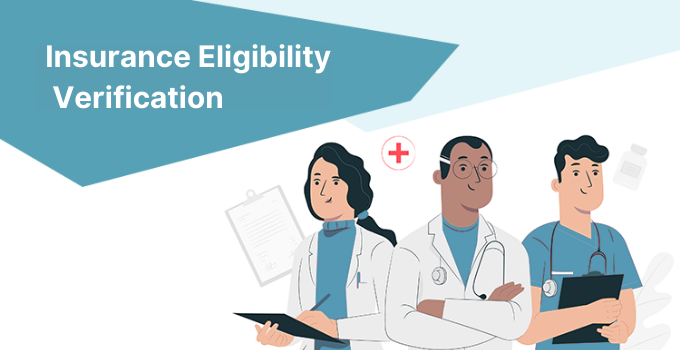In revenue cycle management, insurance eligibility verification is vital to ensure timely and accurate receipt of information in terms of insurance coverage. Most claim denials take place because of patients’ ineligibility for the services billed by the provider.
However, various healthcare providers and patients don’t bother much about the insurance eligibility verification process. Because they are unaware and mixed up about how the insurance mechanism actually works. For this reason, we will explain the benefits and steps of the insurance eligibility verification process.
Define Insurance Eligibility Verification in Healthcare?
Insurance eligibility verification is the process of verifying a patient’s insurance, based on three different statuses:
- Active or inactive status
- Eligibility status
- Coverage status
Insurance eligibility is significant because it is directly linked to payment delays or claim denials and account receivables (A/R) of a healthcare practice.
Process of Insurance Eligibility Verification
The following are the steps of the eligibility verification process:
1. Scheduling Patient
The online scheduling features of an automated appointment scheduling software considerably aid in streamlining the scheduling procedure. It easily automates manual administrative tasks, for instance, rescheduling canceled appointments and reminding scheduled appointments through the mail, call, and text.
2. Enrolling Patient
In the healthcare industry, what must be added to the patient health data, and what must be omitted should be considered for patient information. For instance, a patient’s basic information like his name, address, date of birth, medical history, allergies, and diagnoses do matter a lot.
Likewise, a patient’s contact details like his family doctor, emergency contact, and his insurance provider may be kept elsewhere under particular heads.
Here are the most common medical billing abbreviations.
3. Verifying Eligibility
RCM process plays a key role in automatically stepping up the number of clean claims if done right. A seamless process of insurance eligibility verification fixes major problems such as billing errors, delayed payments, and non-payment.
Maintain a precise record of patient data to periodically check the benefits and coverage extended under his insurance plan. Because any changes, such as birth, marital status, and divorce can alter benefits and coverage. Prompt the patient on benefits like deductibles and co-pay all through organization administrations.
4. Pre-Approval
In revenue cycle management (RCM), payers have to undergo authorization beforehand to make sure whether a specific procedure or medication will be authorized. Healthcare providers should wait until certain medical equipment or treatments get approved if an insurance company does not authorize them right away.
Alternatively, the providers have to contact the insurance providers about the approval process and then take the required steps.
5. Connecting Patients
Collect and correctly maintain all the patient data including health records, contact details, and basic information. Contact the patients for the correct information if any further information, like medication details, is needed.
6. Updating Billing System
Use the medical billing software to handle the patient details including updating his insurance coverage data. Take advantage of an advanced verification system to get the insurance card back and avoid claim rejections by verifying patient eligibility with every visit.
Benefits of Insurance Eligibility Verification
Scaled Up Self-Pay Revenue
Electronically matching patient information with the healthcare database increases the self-pay revenue. That helps patients whose “cover” is unknown. The electronically matching aids in submitting patients’ claims after online verifying their cover status and eligibility. So, that streamlines the pay pipeline for self-pay patients.
Efficient Workflow
Insurance credentialing services speed up the whole process of revenue cycle management. A streamlined and efficient workflow leads to a better patient experience and lesser claim denials.
Higher Cash Flow
Up-to-date eligibility verification helps lower claim denials and improve claim submission. It aids healthcare practices in maintaining cashflow through better patient care and the declined write-offs.
Clean Claim Submission
The errorless eligibility verification process lends a helping hand to the healthcare providers to submit clean claims. Plus, it helps get rid of claim re-submission, demographic or eligibility-related rejections, and improve upfront collections that take patient satisfaction to the next level.
BillMyMed Eligibility Verification Services
- We improve A/R cycles.
- Our experts get our workflow through the EDI, emails, FTP files, and the patient scheduling system.
- We process Medicaid enrolment.
- Our team reminds patients of POS collection requisities.
- We contact patients via the most suitable channels to receive up-to-date insurance information.
- Get higher cash collections by lowering denials and write-offs.
- We use our RPA tools to analyze automated eligibility verification.
